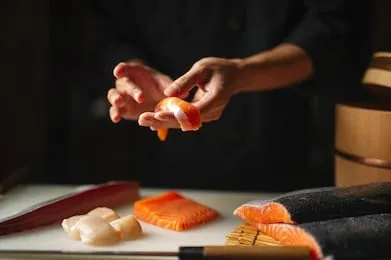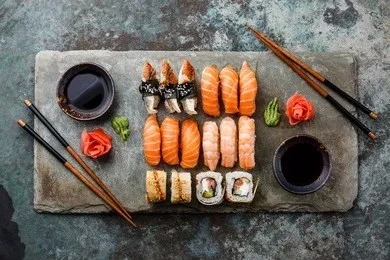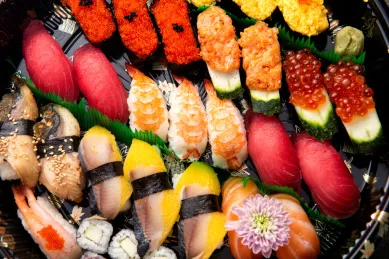Welcome to my blog! Today, I want to share with you the wonderful world of sushi - the essential Japanese cuisine that seduces the palates of food lovers around the globe. In this post, we will explore the history, various types, and the process of making this delectable dish. So, grab your chopsticks and let's embark on a culinary journey to Japan!

Sushi, which means "vinegar rice," originated in the Ryukyu Kingdom (now Okinawa) during the Nara period (AD 710-784). It was initially created as a means to preserve fish by fermenting it in rice seasoned with vinegar. Over time, the dish evolved and became a symbol of Japanese cuisine, now offering a wide variety of styles and flavors.
There are many types of sushi, each named after the type of fish used or the way it's prepared. Some of the most common types include:

- Edomae sushi: This is the style of sushi that we are most familiar with internationally. It is made with raw fish, such as tuna, salmon, and sea bass, and is served with a vinegared rice.
- nigiri sushi: This style is formed into nigiri, or "finger" shape, and is often dipped in soy sauce.
- sashimi sushi: This is a type of sushi made with only raw fish, without the rice. It is usually served as a appetizer or light meal.
- chirashi sushi: This style is made with a mixture of raw and cooked fish, arranged over a bed of rice.
- tamagoyaki: This is a type of omelet made with egg and seasonings, and is often used in sushi rolls as a filling.

Now that we've covered the basics of sushi, let's delve into the process of making it. The key to making good sushi lies in the quality of ingredients used. Here's a step-by-step guide to making nigiri sushi at home:
- Prepare the rice: Use short-grain rice and cook it according to the package instructions. When done, spread it onto a bamboo mat or clean dish towel and let it cool. Meanwhile, mix together some sugar, rice wine vinegar, and salt to make the seasoning sauce. Once the rice is cool, drizzle some seasoning sauce onto it and mix well with a wooden spoon or your hands. The rice should have a slight tangy taste.
- Prepare the fish: The best fish for sushi are typically fatty fish like tuna, salmon, or mackerel. When buying fish, look for the freshest ones available. Rinse the fish under cold water and pat it dry with paper towels. Then, slice the fish into thin slabs using a sharp knife.
- Assemble the nigiri sushi: Dip your hands in a bowl of water to prevent the rice from sticking to them. Take a piece of seasoned rice and shape it into a ball using your hands. Then, place the ball onto your palm and flatten it slightly using your other hand. Next, place a piece of fish onto the rice ball and fold your hand around it to form nigiri sushi. Repeat this process until all the fish is used up.
- Serve: Serve nigiri sushi immediately or store it in an airtight container in the refrigerator for up to a day. To eat, dip each nigiri sushi in soy sauce or seasoned vinegar.
Conclusion:
Embarking on the journey of sushi making allows you to connect with the rich culinary heritage of Japan. By following the techniques and tips shared in this guide, you can create beautiful and delicious sushi at home. So, roll up your sleeves, sharpen your knife skills, and get ready to immerse yourself in the artistry of Japanese sushi making.
(Images from the internet)





